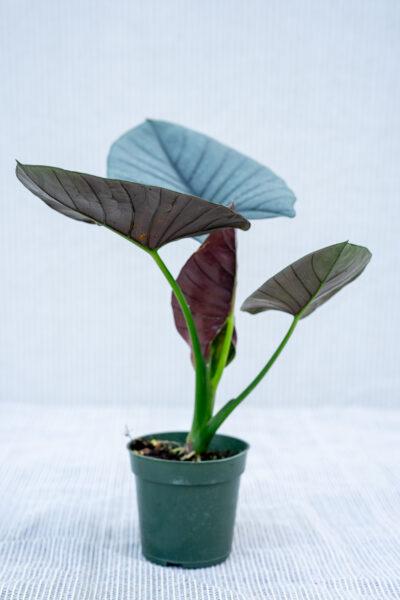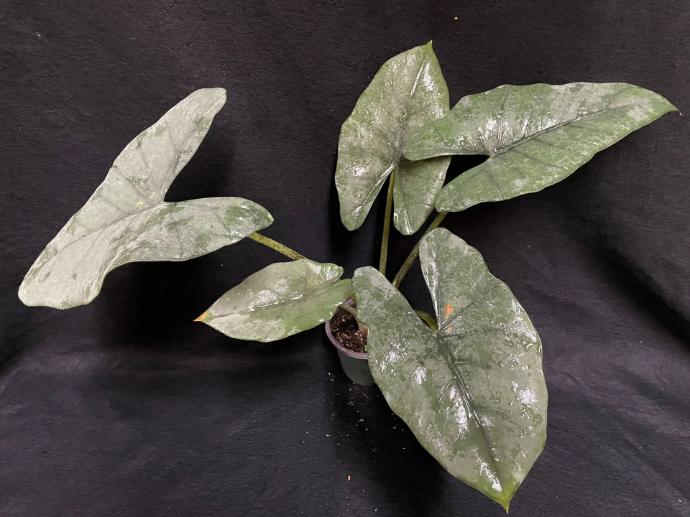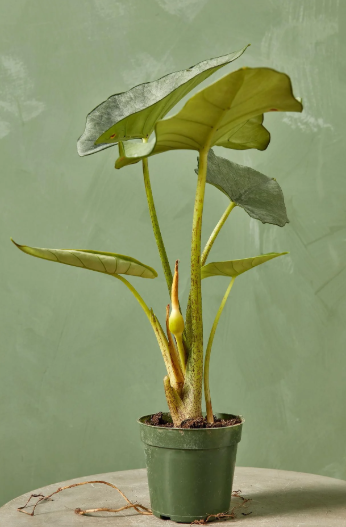Alocasia Blue Plant
| Alocasia Odora 'Blue' Cultivar is a medium-growing plant with high moisture needs, thrives in loamy soil and partial shade. It is non-edible and used medicinally. |

Habit
Herbacious
Height
Medium
Growth
Medium
Soil
Loamy soil
Shade
Partial
Moisture
High
Edible
No
Medicinal
Yes
Origin
Southeast Asia
Climatic Condition
Tropical, Humid
Temperature (°)
20-30
Humidity (%)
60-80%
Potting media
Peat+Perlite
Fertilizers
Balanced NPK(10:10:10)
Watering
Regular, Keep Moist
Plant Weight
300-500 g
Flowering Time
Rarely Flowers
Soil Ph level
5.5-6.5
Water Ph level
6.0-7.0
Soil EC
1-2 dS/m
Yield Per Plant
Ornamental
NPK ratio
10:10:!0
life Span
1-2 yrs
Health Benefits
Suggested Grow Media or Potting Mix ?
| 40% peat moss, 30% perlite, 30% compost |
Suggested Fertigation/Fertilizers
Apply monthly with liquid organic fertilizer
Common Diseases and Remedies
Leaf Spot, Root Rot, Spider Mites, Anthracnose, Aphids.
Yellow spots, leaf curling, browning edges, sticky residue.
Carbendazim, systemic fungicides.
HEALTH BENEFITS
Alocasia plants, particularly Alocasia Polly (also known as African Mask or Elephant Ear), are primarily valued for their striking appearance, but they don't have widespread documented health benefits in the traditional medicinal sense. However, here are a few potential benefits related to the presence of Alocasia plants in your environment:
- Air Purification: Like many houseplants, Alocasia can help improve indoor air quality by removing toxins and releasing oxygen. Plants are known to absorb carbon dioxide and release oxygen, which may contribute to a healthier indoor environment.
- Aesthetic and Emotional Well-being: The visual appeal of Alocasia, with its large, glossy, unique leaves, can have a positive impact on your mood, reduce stress, and enhance the aesthetics of a space, potentially improving mental well-being.
- Humidity Regulation: Alocasia, like other tropical plants, can release moisture into the air through a process called transpiration. This can help maintain indoor humidity levels, which may be beneficial for skin and respiratory health, particularly in dry indoor environments.
However, it's important to note that Alocasia plants are toxic if ingested, especially to pets and children, as they contain calcium oxalate crystals. Always handle them with care.
While the plant's main value is aesthetic, its potential indirect health benefits through air quality and mental well-being are worth noting.

